Saving Robinson Crusoe
Looking for hope in dark times? Ocean islands are one surprising place to find it.
by Richard Conniff
What most people know about Robinson Crusoe Island isn’t much, and all of it comes from a British novelist, Daniel Defoe, who never visited the place. Having apparently borrowed his story from the widely publicized experiences of a real-life castaway, a Scotsman named Alexander Selkirk, Defoe then relocated the island to the Caribbean. (The better to conceal the source of his borrowing?)
In reality, the place Selkirk washed up is in the Pacific, 400 miles off the coast of Chile, of which it is part. It’s a rugged, mountainous island about half the size of Manhattan, the largest of the three major islands in the volcanic Juan Fernández Archipelago. (Selkirk has not been completely forgotten: His name survives on a smaller island in the archipelago, roughly 100 miles west of where he eked out a living from 1704 to 1709.) But the bigger mistake Defoe made—and I realize “mistake” is a strong word to use for a piece of fiction—was to have the title character of Robinson Crusoe, published in 1719, describe his refuge as “a horrible, desolate island.”
We now know that Robinson Crusoe Island is home to more endemic species—plants and animals found nowhere else on the planet—than even the celebrated Galapagos Islands. Charles Darwin knew it, or at least had heard it at second hand. But his work as a naturalist was secondary to the military and geographic missions of HMS Beagle. So Darwin, like Defoe, never got to visit. Instead, he visited the Galapagos, where he made key discoveries for his theory of evolution by natural selection. As a result, it now gets hundreds of thousands of visitors a year.
Robinson Crusoe Island, which renamed itself in 1966 to take advantage of the novel’s popularity, gets … hundreds. (Its former name was Más a Tierra, or “closer to land.”)
The island’s real life endemic species are, however, finally getting their moment in the sun—or at least a little out of the human shadow. This week, conservationists announced an international effort to relieve them over the next two years of the introduced rats, cats, goats, rabbits, and coatis (a raccoon-like South American species), which have persecuted them for centuries and driven many of the island’s extraordinary species to the brink of extinction, or beyond.
The restoration project is a joint effort of three groups, Island Conservation, Re: Wild, and the Scripps Institute of Oceanography. It’s part of a larger effort they have dubbed the Island-Ocean Connection Challenge. Restoring Robinson Crusoe Island and, at the same time, Chincha Norte, one of the Guano Islands of Peru, will bring the number of islands restored by this campaign past the halfway point, toward a goal of 40 such restorations by 2030.
At the same time, Chile announced that it is expanding the marine protected area around the Juan Fernández Archipelago by 350,000 square kilometers (135,135 square miles). “This is the most unique fish fauna on Earth,” marine ecologist Alan M. Friedlander said, after a 2017 expedition there for National Geographic’s Pristine Seas program, “with nearly all the species we see known only from these islands.” The expedition estimated that an astonishing 72 percent of the fish and 64 percent of the terrestrial plants and animals exist nowhere else on Earth.
Among the species expected to quickly recover in the aftermath of the project is the critically-endangered Juan Fernández Firecrown hummingbird, now down to fewer than 2000 individuals, and commonly preyed on by outdoor house cats. One of the plants that the hummingbird pollinates, an evergreen with the unromantic name “tree cabbage” (Sonchus brassicifolius), is now also critically endangered. But it’s likely to recover after the removal of goats that now routinely strip off its leaves.
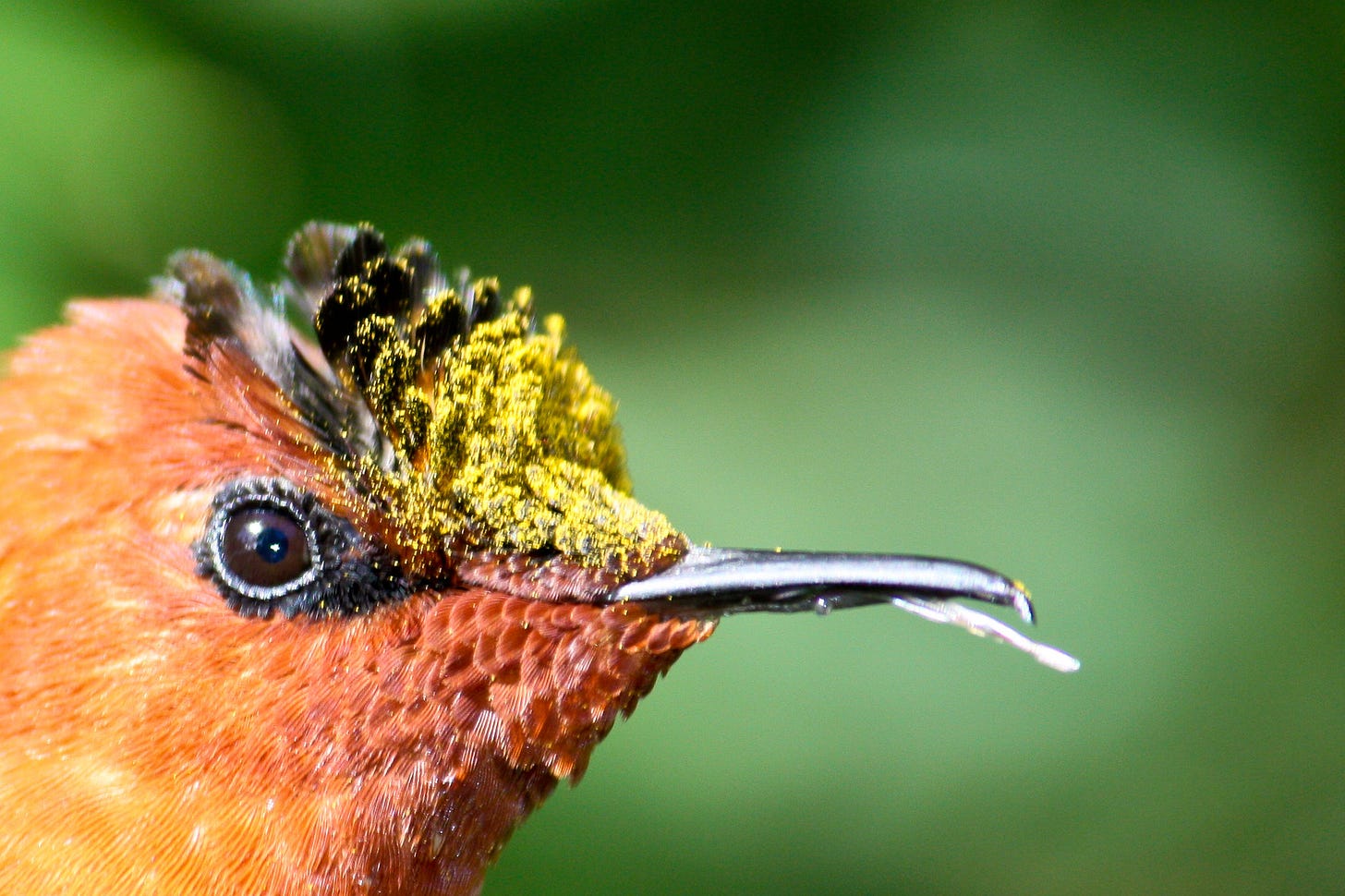
About 900 people live on Robinson Crusoe Island today, and earn their livelihood mainly from fishing. Humans are newcomers to the island, having lived there consistently only since the late nineteenth century. But domestic and pest animals started arriving in 1574, with the first known visitor to the island, Juan Fernández, a Spanish explorer. Pirates, seal-hunters, whalers, and other visitors stopped in thereafter to re-supply with goat meat, for instance, while also often adding to the non-native menagerie.
Solange Goldswosthy, who grew up on Robinson Crusoe in a family that has lived there for generations, is leading the restoration project. She had moved to mainland Chile for a time to become an architect, but returned to Robinson Crusoe to work on rebuilding after a tsunami hit the island without warning in 2010, sweeping away much of the housing and killing 16 residents. Island Conservation later hired her as a project manager.
Goldswosthy recalls her grandparents telling her about times of scarcity, when islanders turned to the goats and coatis for food. Understanding that history has proved useful in gently persuading people of the need to control invasive species now. “There's a lot of myths going around,” she told me. “A lot of people have their own beliefs regarding things, and they justify certain types of connections that they've made with these damaging species.”
Each introduced species has required a separate strategy, she said, both for persuading people to act and then for eradicating or otherwise controlling problem species. These techniques vary according to the circumstances on each island. But they have evolved over the past 30 years, on 200 ocean islands that Island Conservation has already restored, often bringing species back from near extinction and sometimes rediscovering species that had been thought to be irretrievably lost.
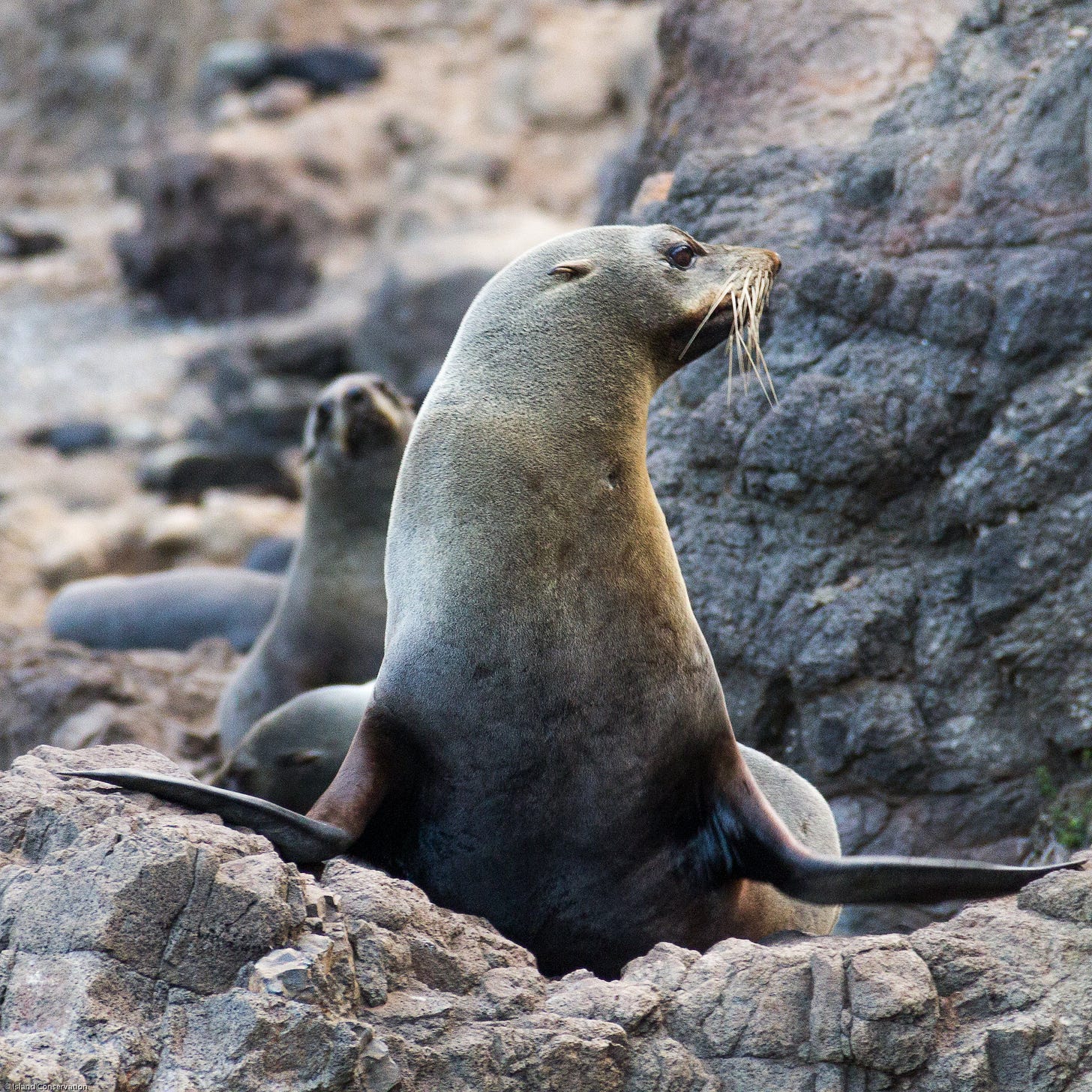
The Robinson Crusoe Island project will use exclusionary fencing for goats, five different kinds of live traps for other species, hunting for coatis, and a poison called brodifacoum to eradicate rats, which kill birds on the nest and their eggs. Use of that poison on other islands has sometimes required trapping and removing owls and hawks, to avoid secondary poisoning, then returning them to the wild after the danger has passed.
Goldswosthy says camera traps have proved useful so far on Robinson Crusoe Island for understanding what’s happening to the wildlife. They've also provided evidence to present to her fellow islanders. One of the great pleasures of island life, she said, comes in December, when the firecrown hummingbirds move down from the uplands into the community. “We start hearing the songs, right? You see them in the streets. They come in our gardens,” where some native plants are protected and provide food. “It's a carnival of birds, of hummingbirds. We are amazed at their presence. But we also see how the cat gets rid of them.”
After showing the other islanders camera trap footage of what was happening to birds in the wilder parts of the island, she said, “now we have a project where the community allowed us to have camera traps within their land, within their backyards, and we were able to record how their own animals”—their outdoor cats—”are damaging the hummingbird. So they are able to understand how their own beliefs, at the end of the day, interfere with actions that are so important to be able to care for our environment.” For cats kept as pets, the project now pays for sterilization and routine veterinary care. For feral cats, it relies on live traps and sends the animals to the mainland for adoption or, as a last resort, euthanasia.
The use of fencing around test plots has also helped demonstrate what larger scale control of introduced plant eaters can do for the island’s native vegetation. For most islanders, slopes denuded of vegetation, with the soil routinely eroding, are normal. That’s the way it has been their entire lives. When the rains come, the bay, which most islanders see out their windows, has always turned brown with the soil that gets washed off the hillsides. It’s easy to go through life never thinking about why the slopes are bare, or what the silt deposited on the floor of the bay does, for instance, to reproduction by fish and other marine species. But then fencing goes up on a test plot that looks like nothing more than nibbled down plants and bare dirt, said Goldswosthy, and “it's crazy to see that when we create these plots, all of the vegetation, all of these endemic species, start to recover immediately.”
People begin to understand that just by removing problem species, she said, “the island, has the ability of recovering, and recovering fast.” They begin “imagining not having cats, not having coatis, not having rabbits.” Instead, they imagine “a green recovered Island,” populated with birds and other native species now understood to be of global importance. Maybe they also think more practically, about better fishing, or an improved economy based on birdwatching, hiking, rock climbing, snorkeling, and sportsfishing.
Either way, they begin to hope. And then, gently nudged along by Goldswosthy, one of their own, they act.
Richard Conniff’s latest book, Ending Epidemics: A History of Escape from Contagion (MIT Press), is now out in paperback. His other books include The Species Seekers: Heroes, Fools and the Mad Pursuit of Life on Earth (W.W. Norton), Spineless Wonders: Strange Tales of the Invertebrate World (Henry Holt), and Swimming with Piranhas at Feeding Time—My Life Doing Dumb Stuff with Animals (W.W. Norton). He is a National Magazine Award-winning feature writer for Smithsonian, National Geographic, and other publications, and a former contributing opinion writer for The New York Times.

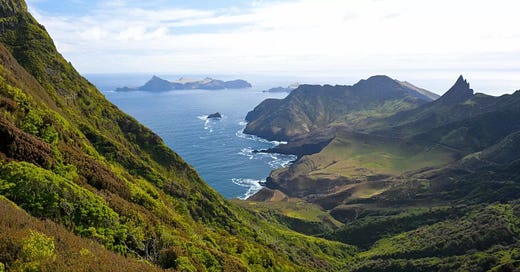



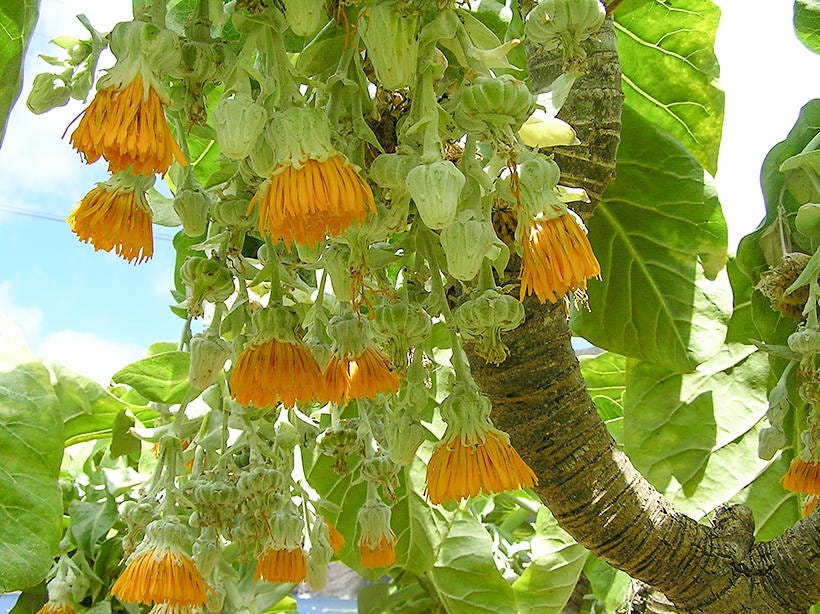

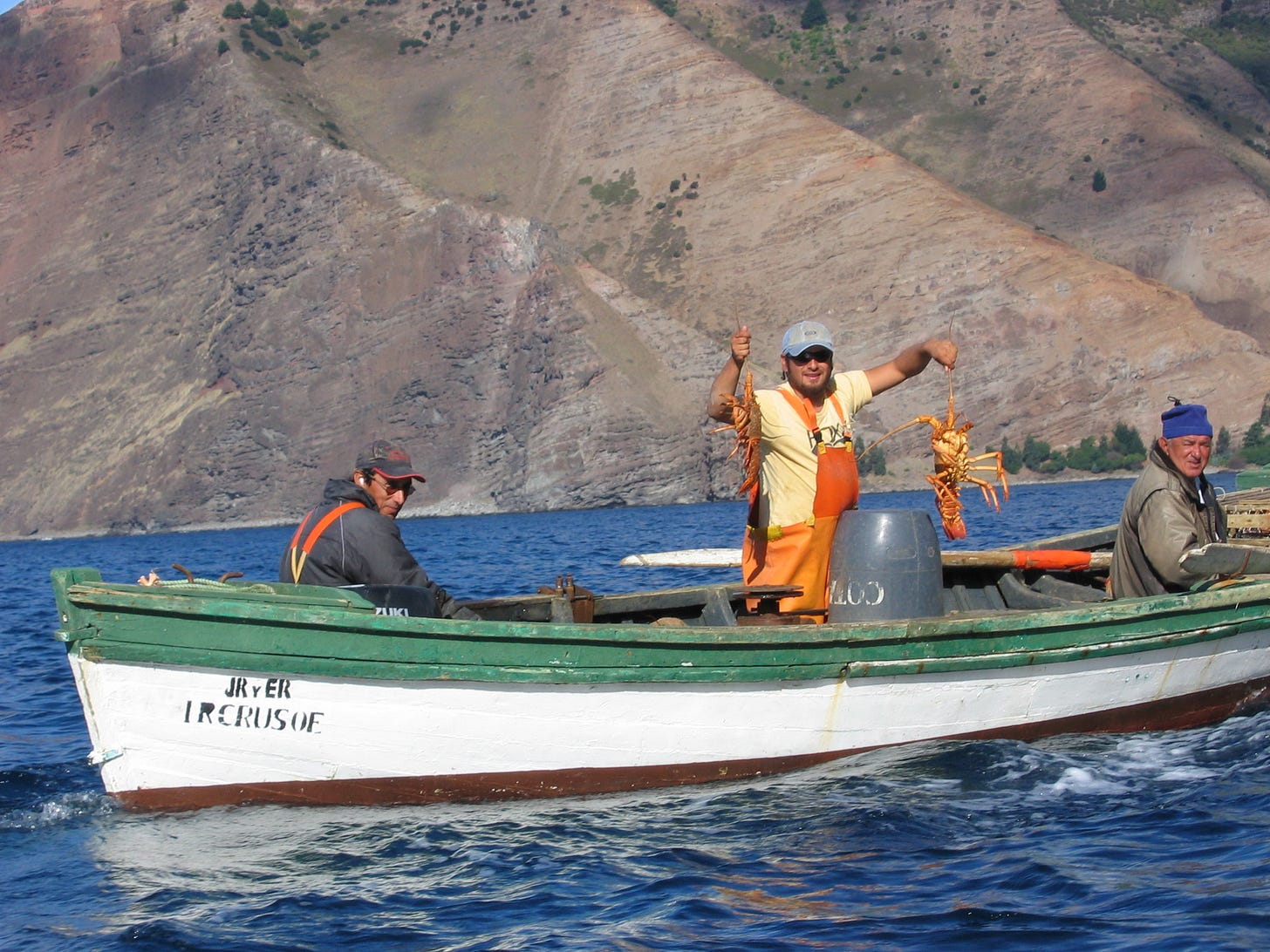
Loved this! Did a film on fur seals with John Francis on Selkirk years ago. Never knew the Juan Fernandez Islands had such diversity. So happy to hear it's being preserved.
Very inspiring!